Early September marks a pivotal moment in the gardening calendar. As summer starts to transition into fall, it opens up various opportunities for planting—both for a fall harvest and for spring display. Knowing what to plant can not only enhance your garden’s aesthetic but also provide you with flavorful produce and fragrant herbs.
This guide will help you choose the best vegetables, flowers, herbs, and landscape plants to cultivate during this time, tailored to the unique conditions found in different USDA zones.
Vegetables To Plant
Spinach

Spinach is a nutrient-dense powerhouse that thrives in cooler temperatures. In USDA zones 3-7, you can plant spinach in early September, allowing it to mature before the first hard frost. Spinach loves well-drained soil rich in organic matter, requiring a pH between 6.0 to 7.0. Ideal for cooler climates, spinach can tolerate temperatures as low as 20°F (-6°C). Seeds can be sown directly into the garden; if you’re in a warmer zone, consider using shade cloth to protect the seedlings from late summer heat.
Kale
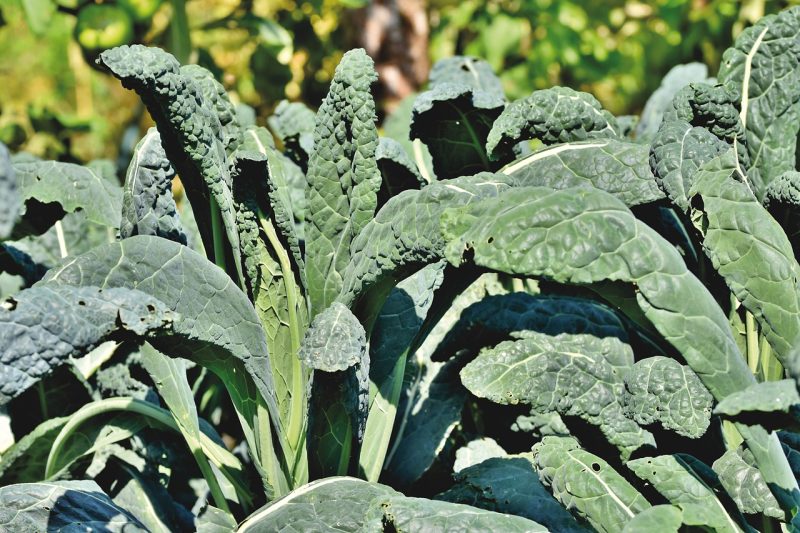
Kale is another hardy green that performs exceptionally well in the cooler months. In USDA zones 2-9, September marks a great time for planting. This leafy vegetable can withstand temperatures down to 15°F (-9°C), making it an excellent choice for fall harvests. Kale improves its flavor after a light frost, turning sweeter as the temperatures drop. When planting, space the seeds about 18 inches apart, and monitor moisture levels as kale prefers consistent watering.
Radishes

Radishes are quick-growing root vegetables that can be sown directly in the garden. They thrive from USDA zones 2-10. Given their fast maturation—usually within three to four weeks—planting in early September allows you to enjoy fresh radishes by October. Radishes thrive in cooler temperatures and can tolerate light frosts. Choose varieties such as Cherry Belle or French Breakfast for quick results and ideal flavor.
Carrots

Sowing carrots in early September is an excellent strategy for gardeners in USDA zones 3-7. They take about 70 to 80 days to mature, so timing is crucial. While they can survive temperatures as low as 15°F (-9°C), it’s best to select varieties suited for late autumn harvest, like ‘Nantes’ or ‘Danvers.’ Carrots require loose, sandy soil to grow straight and long, so be sure to prep soil well before planting. Adding mulch can help retain moisture and improve root development.
Turnips
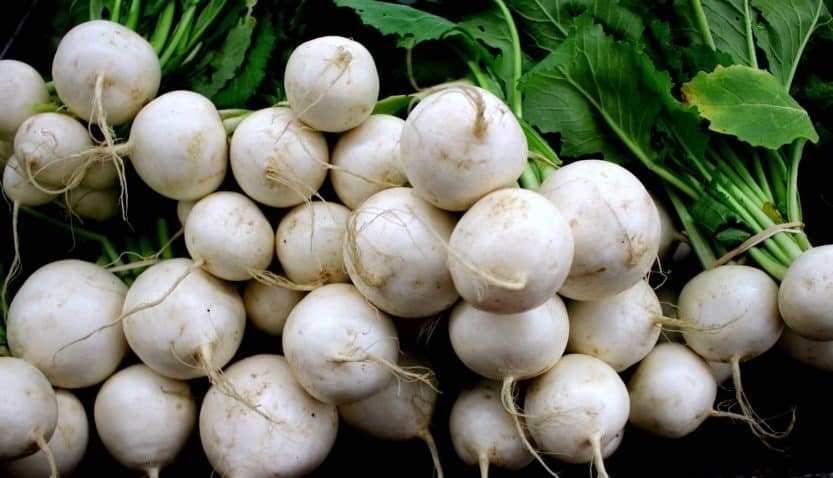
Turnips are a versatile veggie that thrives in zones 3-9. Their growing season ranges from about 30 to 60 days depending on the variety you choose. They can withstand light frosts, so planting in early September is ideal for those in cooler regions. Varieties such as ‘Hakurei’ are great for a quick turnaround. Ensure they have plenty of space to grow, ideally sowing seeds 2 inches apart for optimal size.
Swiss Chard

Swiss chard is a leafy vegetable that is both decorative and nutritious, thriving well in USDA zones 3-10. Planting in early September ensures a harvest that can last well into fall and even early winter. This plant can tolerate frost down to 20°F (-6°C). Known for its vibrant stalks and leaves, it’s a beauty in the garden and on the plate. Swiss chard prefers slightly acidic soil (pH 6.0-6.8) and should be spaced 12 inches apart for optimal growth.
Beets
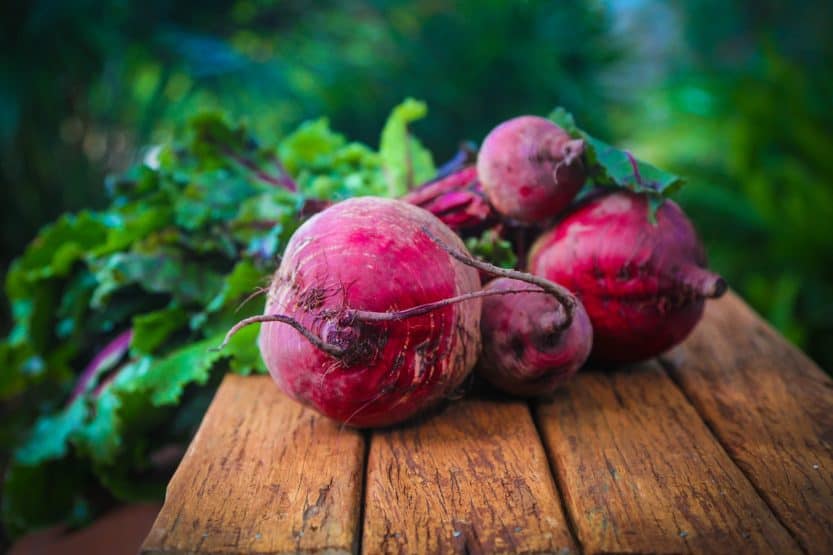
A robust root vegetable, beets can be planted in early September in USDA zones 3-9. They take about 60 to 70 days to mature, making them a perfect late-season crop. Beets enjoy well-drained soil with plenty of organic matter. They can handle temperatures as low as 20°F (-6°C) and often develop sweeter flavors post-frost. Thin seedlings to about three inches apart for adequate spacing, and you can enjoy both the roots and the greens.
Broccoli

For those in USDA zones 3-7, September is an excellent month for planting broccoli. This cool-weather crop can withstand light frosts and grows best with temperatures between 60°F to 70°F (15°C to 21°C). Plant seedlings 18-24 inches apart, and be sure to amend your soil with compost to ensure robust growth. Broccoli typically takes 70-90 days to mature, so keep an eye on the development of the heads.
Garlic
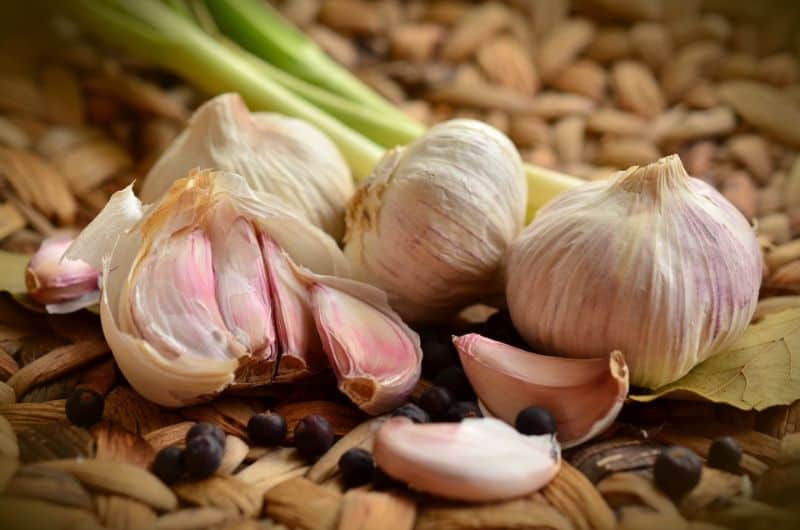
While garlic requires a little planning, early September is prime time for planting in USDA zones 3-9. Garlic is typically planted in the fall with the expectation of a mid-summer harvest. They thrive in well-drained, fertile soil and require cold temperatures to initiate bulb formation—ideally a frost period. Depending on the variety, plant garlic cloves about 2 inches deep and spaced 4-6 inches apart. Keep the soil moist but not waterlogged for optimal growth.
Cabbage
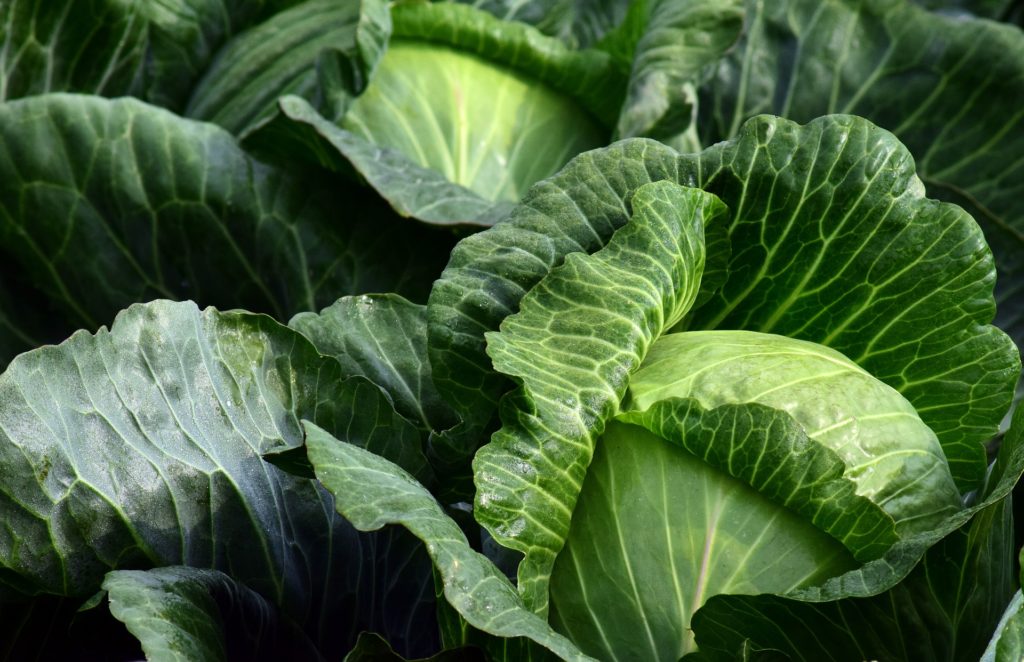
Cabbage is an excellent choice for planting in early September across USDA zones 3-8. It thrives in cooler temperatures and can withstand light frosts. Typically taking 70-100 days to mature, you can expect a bountiful harvest well into the fall. When planting, space your seedlings 12 to 18 inches apart, providing ample room for the heads to expand. Cabbage enjoys rich soil, so be sure to add fertilizer or compost prior to planting.
Flowers To Plant
Asters
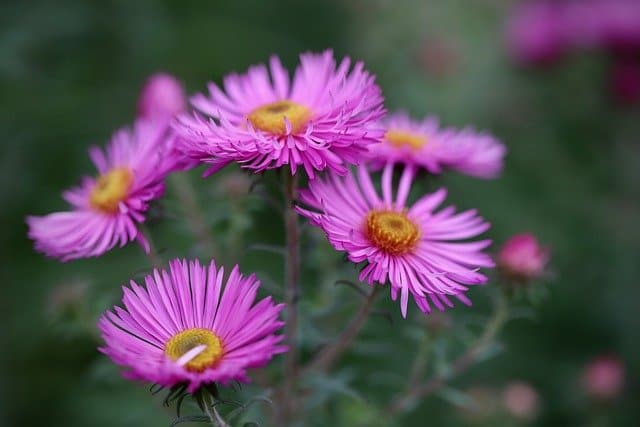
Asters are vibrant, fall-blooming perennials that do well across USDA zones 3-9. Planting in early September gives these beauties enough time to root before the winter chill. Asters thrive in well-drained soil with plenty of sunlight, making them a great choice for borders and containers. They can tolerate light frosts, enhancing their resilience. Many varieties reach heights of 1-3 feet, providing a brilliant burst of color that often attracts pollinators.
Mums (Chrysanthemums)
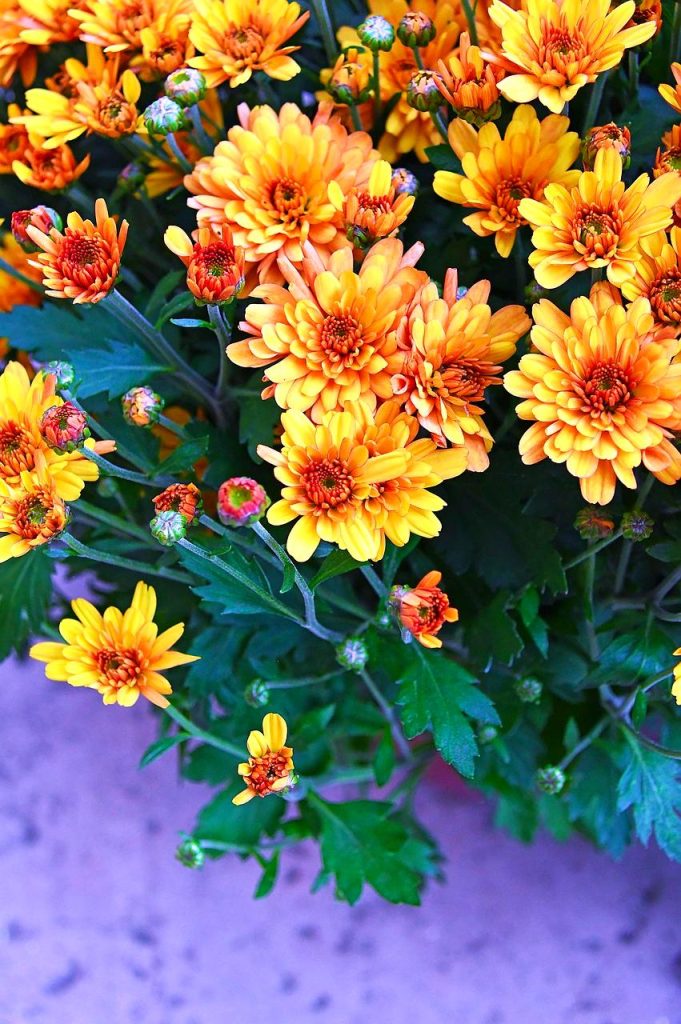
Known for their rich hues, mums are perfect for brightening up the garden during the fall season. They can be planted in USDA zones 3-9. Planting them in early September allows them to establish roots before the harsher weather sets in. Mums typically flourish in well-drained soil and prefer full sun. They can endure temperatures between 30°F to 50°F (-1°C to 10°C) with some frost tolerance. When planting, ensure they are spaced about 18 inches apart to allow for their sprawling growth.
Pansies

Pansies are charming, cool-weather flowers that bloom beautifully in early fall. Suitable for USDA zones 4-7, they can be planted in early September for a stunning autumn display. Pansies thrive in well-drained, moist soil and moderate temperatures. They can withstand light frosts, which often enhance their vibrant colors. Ideal for containers or as border plants, these lovely flowers bring cheer to any garden space.
Violas
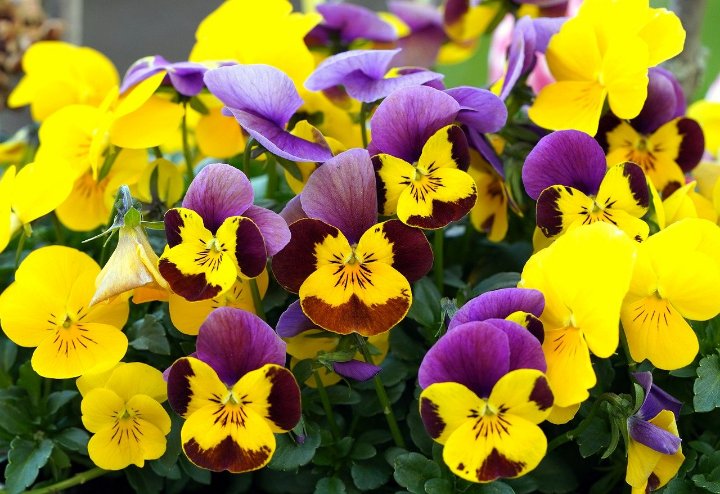
Similar to pansies, violas are hardy little plants that can bring color to your garden in USDA zones 4-8. Plant early September for a delightful fall bloom that can even last through mild winters. Violas prefer well-drained soil and can tolerate light frost. They thrive in cooler temperatures and can bloom in a variety of colors. Their compact growth makes them perfect for edging gardens or filling containers.
Sedum

Commonly known as stonecrop, sedum is a succulent perennial that thrives in USDA zones 3-10. Early September is an excellent time to plant, as they establish roots quickly and provide vibrant colors into the fall. Sedums are drought-tolerant and prefer well-draining soil, making them low-maintenance. They can handle a wide range of temperatures but are particularly tolerant of heat, thriving in full sun.
Sweet Alyssum
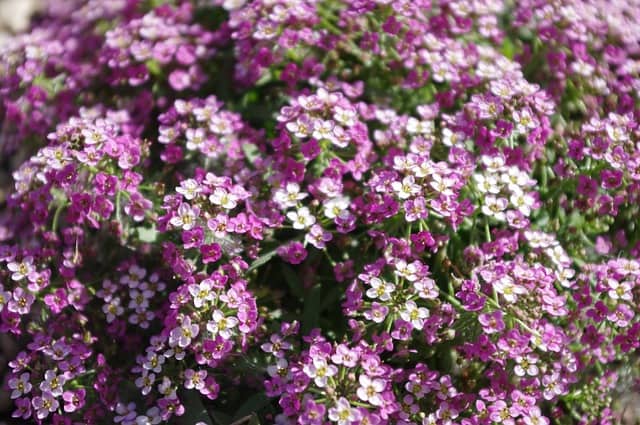
Sweet alyssum is a delightful annual flower that produces tiny, fragrant blooms, ideal for pollinator gardens. It is suitable for USDA zones 4-9 and can be planted in early September for fall blooms. This hardy plant enjoys well-drained soils and thrives in cooler temperatures. It is particularly tolerant of light frosts and can even self-seed, providing a continual display in subsequent years.
Ornamental Kale
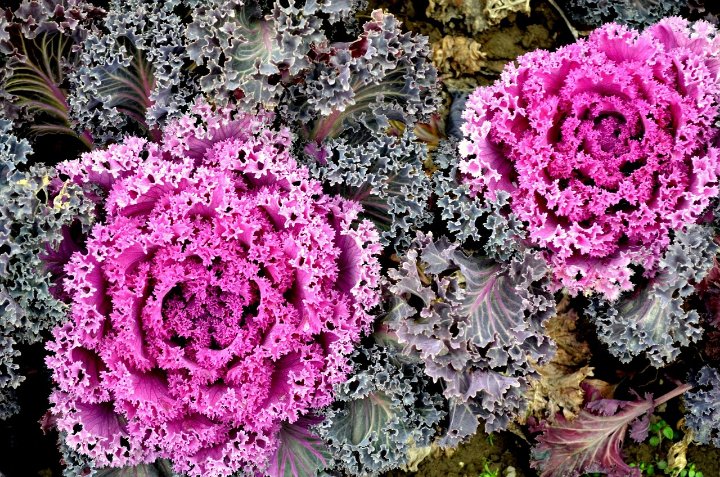
While not a traditional flower, ornamental kale adds a striking touch to fall gardens. It can be planted in USDA zones 3-9 in early September. This plant flourishes in cooler weather, producing stunning leaf rosettes in shades of purple, pink, and green. Ornamental kale prefers well-drained soil and should be spaced about 12-18 inches apart. They can handle frosts very well, often leading to an even more vibrant color display as temperatures drop.
Cosmos
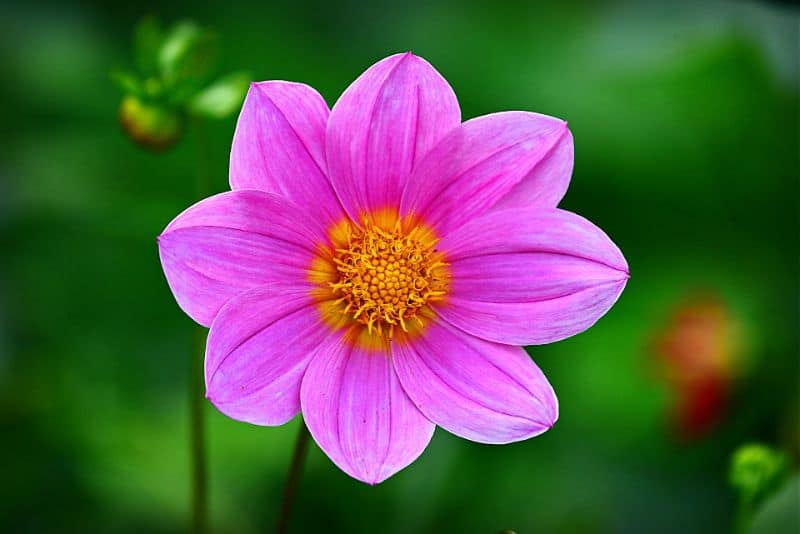
Cosmos are lovely annual flowers that can bloom late into the fall when planted in early September. In USDA zones 2-11, they are versatile and easy to grow in well-drained soil under full sun. While they typically prefer warm weather, certain cultivars can tolerate cooler temperatures. Plant them about 12 inches apart, allowing their feathery foliage to fill in and support the colorful blooms that attract butterflies.
Black-eyed Susans
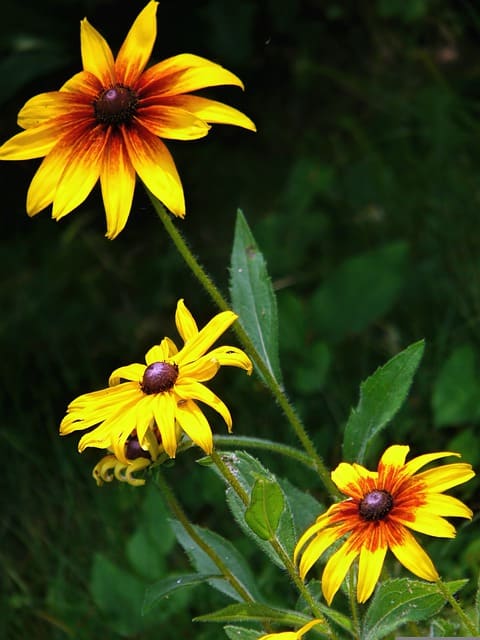
As a popular perennial, black-eyed Susans are suitable for USDA zones 3-9. Planting them in early September allows them to develop strong roots before winter. These flowers prefer well-drained soil and full sun. While they can handle some drought, consistent moisture will lead to a more robust display. They tolerate light frosts and are easily propagated by division in spring or fall.
Hardy Garden Mums
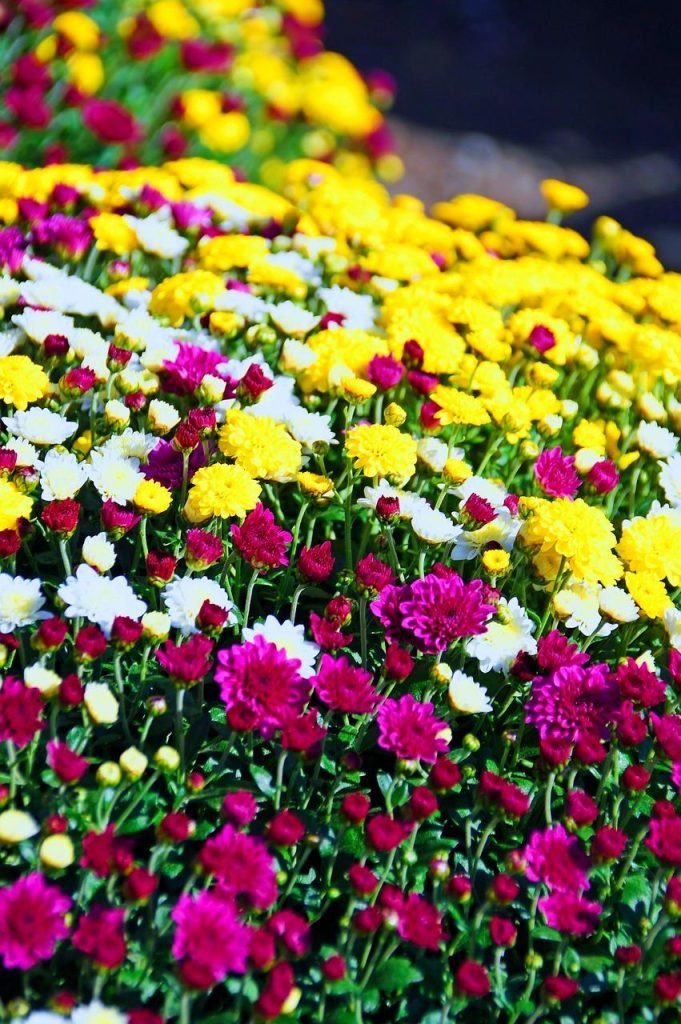
These resilient perennials, distinct from regular garden mums, can be planted in USDA zones 4-9. Early September is an ideal time to establish them for a glorious autumn show. Hardy mums prefer full sun and well-drained soil. They can withstand cold temperatures and light frosts, often blooming late into fall, making them perfect for adding color and life to your garden just before winter.
Herbs To Plant
Cilantro

Cilantro is a wonderful herb that thrives in cooler weather, making early September the perfect time to plant it in USDA zones 3-9. This herb is a fast-growing annual that can tolerate light frosts. Typically, cilantro can be harvested in about 3-4 weeks, making it great for a quick crop. It prefers well-drained soil and consistent moisture. The leaves are used for culinary purposes, while the seeds (coriander) are used as a spice in various dishes.
Dill
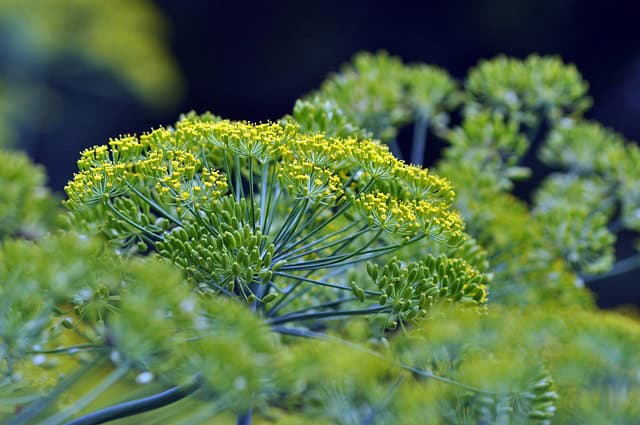
Dill can be planted in early September across USDA zones 3-9. It’s an excellent herb for cool-weather gardens, typically requiring around 40-60 days to mature. Dill can withstand light frosts well, enhancing its flavor. It thrives in full sun and well-drained soil, and make sure to plant it in a location where it can reach 18-24 inches tall, as it can grow quite leggy. Dill also attracts beneficial insects like pollinators and predatory wasps to your garden.
Chives
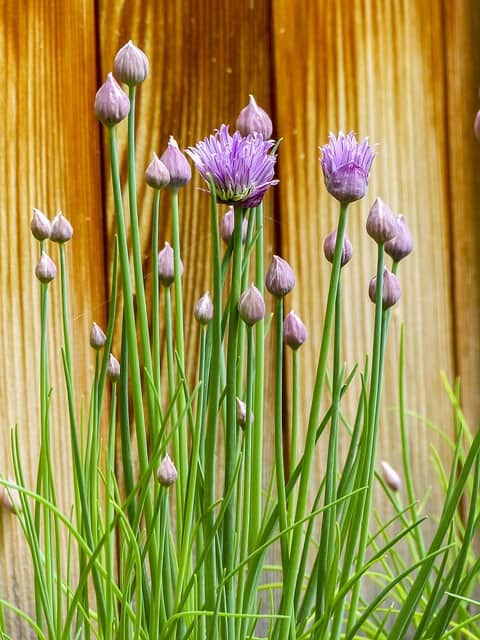
Chives are a perennial herb that can comfortably grow in USDA zones 3-9. Early September is an ideal time to plant them, as they can tolerate frost and will begin growing again in early spring. Chives prefer well-drained soil and will benefit from full sun. These robust little herbs can add a mild onion flavor to dishes and can also produce beautiful purple flowers in the spring.
Parsley

Parsley, another hardy annual herb, can be planted in early September in USDA zones 4-9. This herb prefers well-drained soil and lots of sunlight. Depending on variety, it usually takes about 70-90 days to mature. It can handle light frosts up until it bolts in the spring. It’s versatile in the kitchen, complementing a variety of dishes while serving as a garnish or salad ingredient.
Sage

Sage is a perennial herb that can easily adapt to USDA zones 4-9. If planted in early September, it allows time for the plant to establish roots before winter. Sage prefers well-drained soil with full sun and can be tolerant of drought conditions. This flavorful herb can survive harsh winters and provide fresh leaves for cooking year after year. Its distinct aroma and flavor make it a staple in many culinary traditions.
Thyme
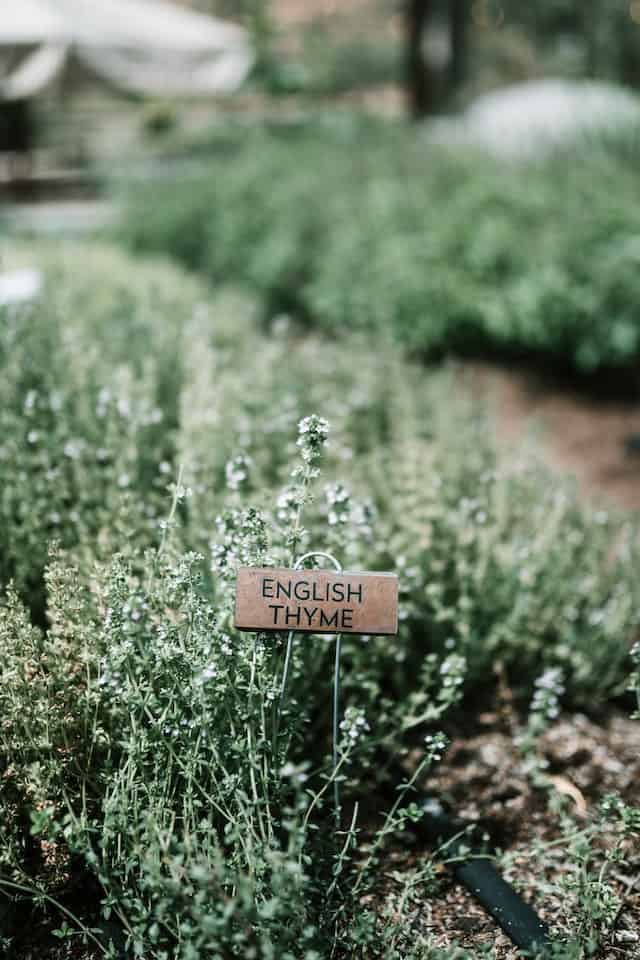
Thyme is another hardy perennial suitable for planting in early September in USDA zones 3-9. It’s remarkably resilient, thriving in well-drained, rocky soils and full sunlight. Thymes can tolerate frost well, and once established, it can survive extreme drought conditions. This versatile herb is excellent in cooking and pairs beautifully with a variety of dishes, making it a favorite among many gardeners.
Oregano

Oregano is a perennial herb that can be planted in early September across USDA zones 5-10. This herb thrives in well-drained soil and full sunlight, making it ideal for a sunny garden. Oregano can tolerate light frost, and once established, it is quite a low-maintenance herb that will provide fresh leaves year after year. It’s a staple ingredient in Mediterranean cuisine, adding robust flavors to pizza, pasta, and salads.
Fennel
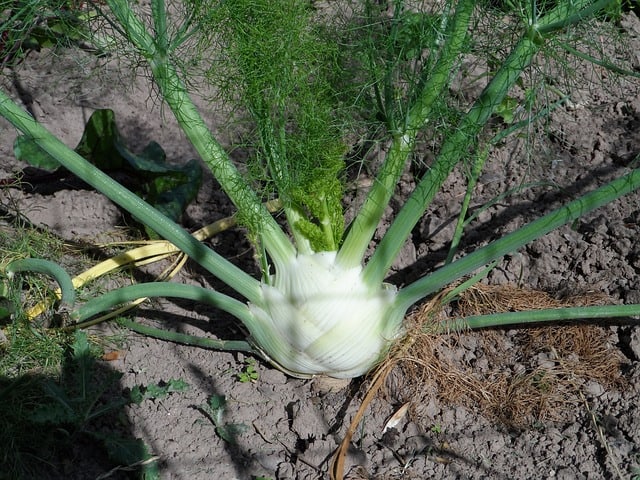
Fennel, specifically the herb variety, can be planted in early September in USDA zones 4-9. While it takes about 80 to 100 days to mature, fennel can withstand cool temperatures. Plant seeds directly into well-drained soil in full sun for best results. It can tolerate brief periods of frost, but growth slows down during colder weather. Both the feathery fronds and the bulbous base of fennel are edible, making it a lovely option for culinary applications.
Lemon Balm
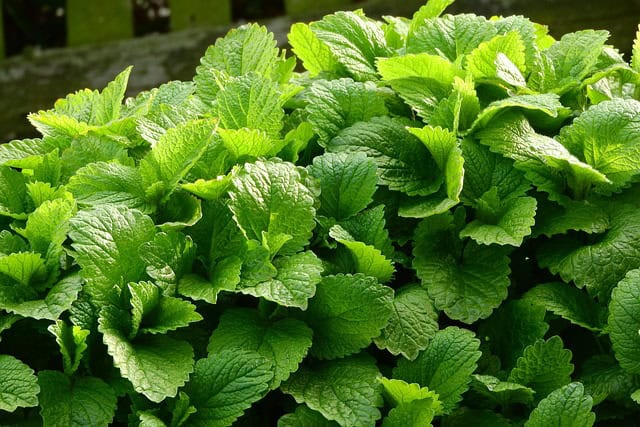
Lemon balm is a fragrant perennial herb that does well in USDA zones 4-9. Early September is the perfect time to plant for it to establish before winter. It prefers well-drained soil in full sun or partial shade. While hardy, it benefits from some light frost protection to ensure growth. Lemon balm is a delightful addition to tea, desserts, and salads, known for its lemony scent and taste.
Mint
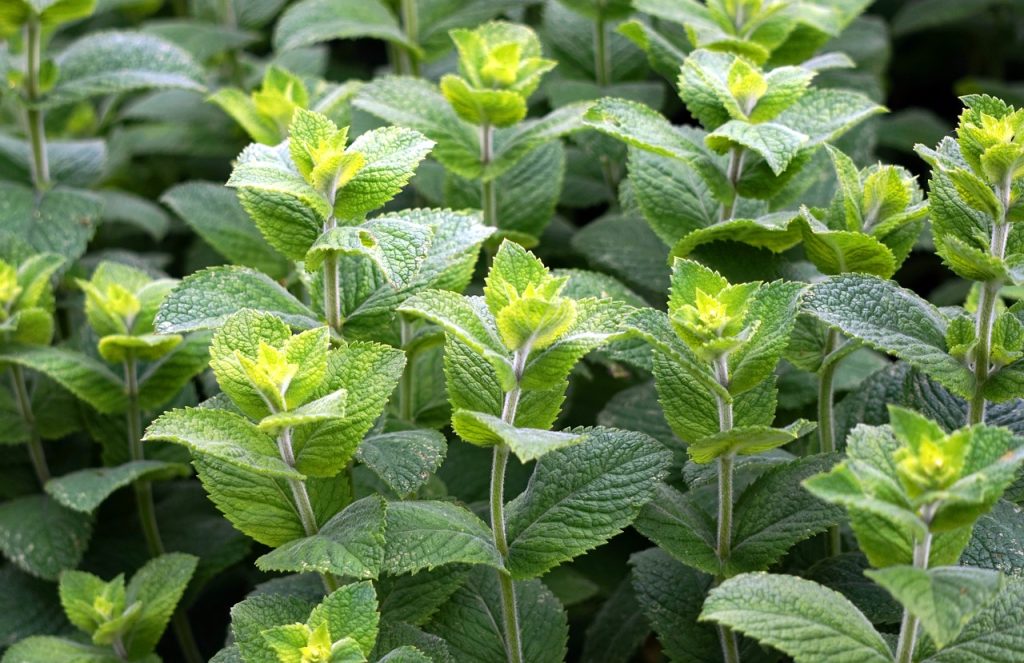
Mint is a hardy perennial that thrives in USDA zones 3-10. Early September offers an excellent opportunity for planting, as mint can tolerate frost and grows vigorously. It prefers rich, moist soil in either full or partial sun. Be cautious, however, as mint can be invasive—it’s best grown in containers or controlled areas. It can be used fresh in culinary dishes and adds a refreshing flavor to beverages and desserts.
Landscape Plants To Plant
Ornamental Grasses
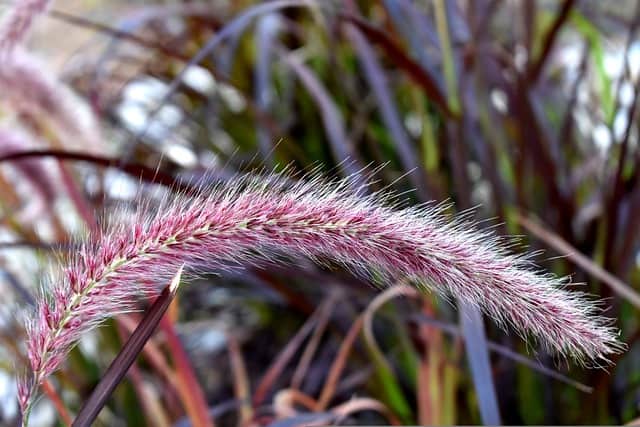
Ornamental grasses, like Miscanthus sinensis (Maiden grass), can be planted in early September across USDA zones 4-9. These grasses add texture and movement to your landscape, thriving in full sun and well-drained soil. They are typically hardy and can withstand a variety of conditions, offering a stunning display in the fall. Once established, these grasses are drought-resistant and provide winter interest as well.
Dogwood Trees

Dogwood trees are a lovely choice for landscapes, providing stunning blooms in spring and vibrant foliage in fall. They can be planted in USDA zones 5-9 in early September for best results. Dogwoods prefer well-drained soil and thrive in partial shade to full sun. They typically reach heights of 15-30 feet, making them perfectly sized for smaller yards, while their majestic flowers attract pollinators and provide visual interest year-round.
Barberry
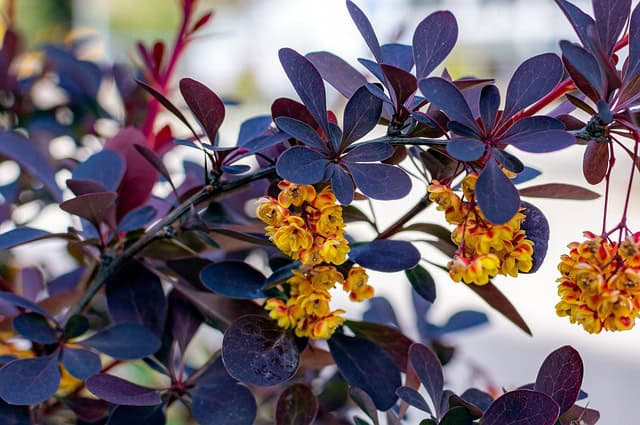
Barberry is a hardy shrub that thrives in USDA zones 4-8. Early September is a timing sweet spot for planting, allowing roots to establish before winter’s chill. This drought-tolerant shrub loves well-drained soil and can tolerate a range of conditions from sun to partial shade. The colorful foliage provides a visual appeal, and barberries also produce small, attractive berries, making them excellent for adding seasonal interest to your landscape.
Potentilla
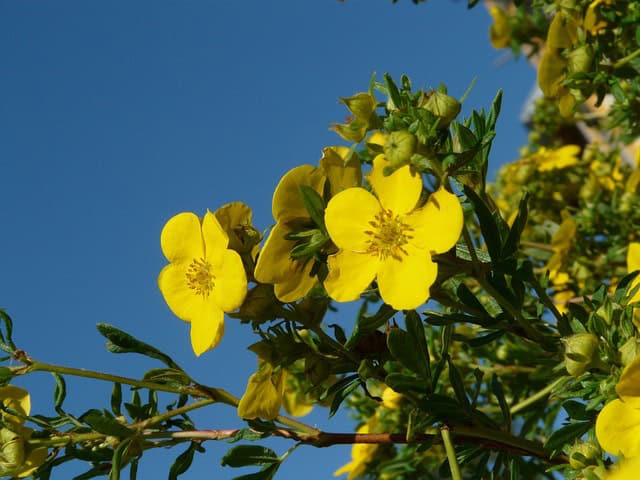
Potentilla is a resilient shrub that flourishes in USDA zones 3-7. It can be planted in early September, allowing roots ample time to set before winter. Potentilla thrives in well-drained soil and full sun to partial shade, producing beautiful blooms from late spring to fall. This low-maintenance shrub is great for borders, attracting butterflies and pollinators throughout its blooming period.
Spirea
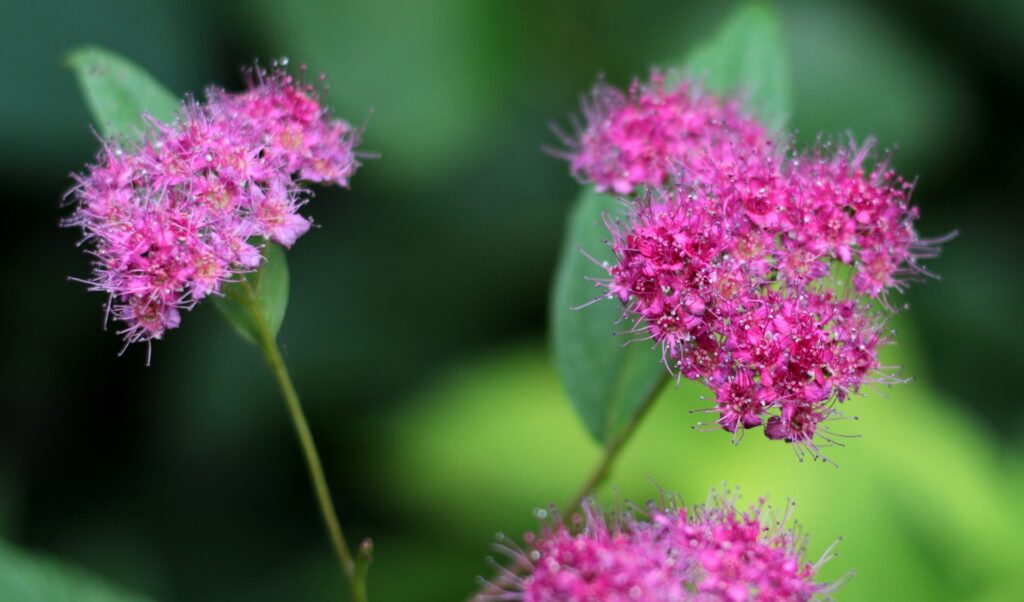
Spirea shrubs are hardy perennials that can be planted in USDA zones 3-9. Early September is an excellent time for planting, allowing them to root and prepare for winter. Spiraea prefers full sun and well-drained soil, producing stunning clusters of flowers that attract pollinators. They are low-maintenance and can add beautiful color to your garden landscape.
Holly
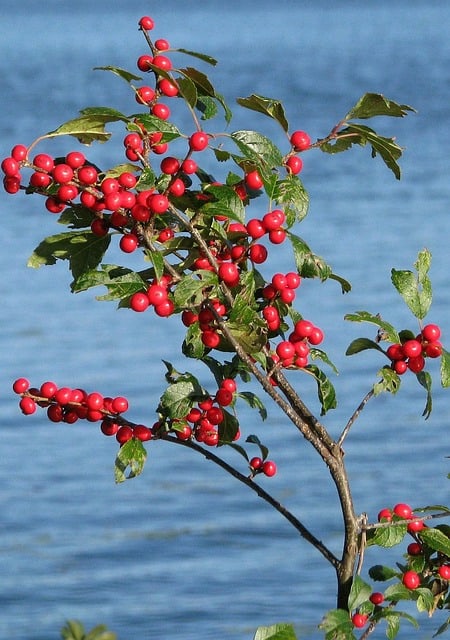
Hollies are evergreen shrubs that can be planted in USDA zones 5-9 during early September. These plants thrive in well-drained soil and can tolerate shade, making them versatile. They provide year-round beauty, with vibrant red berries in winter—an excellent food source for wildlife. Hollies can vary in size, so choose a variety that fits your space, ensuring it can develop into a healthy, thriving specimen in your landscape.
Red Maple
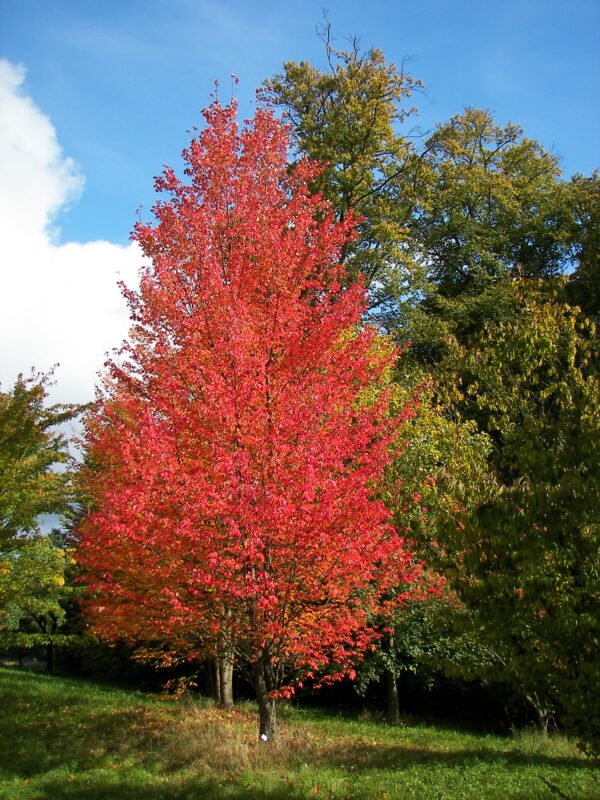
The Red Maple is a beautiful landscape tree that can thrive in USDA zones 3-9. Early September is a great time to plant for optimal root establishment before the onset of cold weather. Red Maples prefer slightly acidic, well-drained soil and thrive in full sun to partial shade. Their striking red foliage in the fall is mesmerizing, providing stunning visual interest year after year.
Lavender
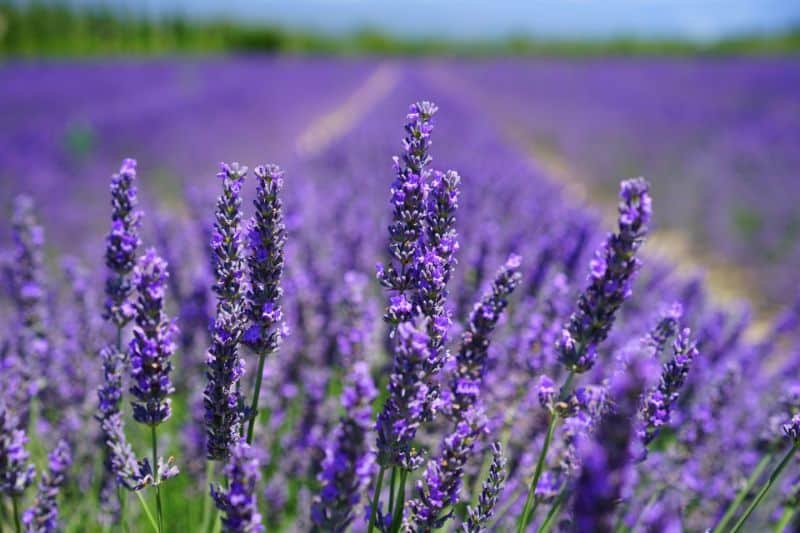
While often viewed as an herb, lavender can also be an excellent landscape addition. Hardy in USDA zones 5-9, early September is perfect for planting lavender for a fragrant and visually appealing feature in any garden. Full sun and well-drained soil are essential for growth, and once established, lavender is drought-tolerant. Not only does it provide lovely blooms, but it also attracts pollinators, making it a multifunctional plant for any landscape.





